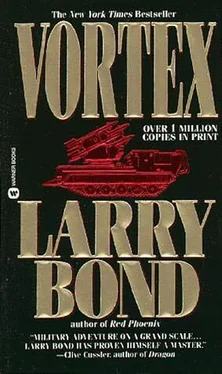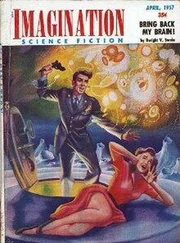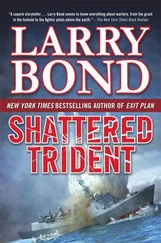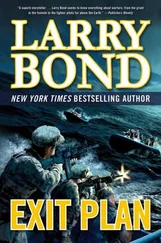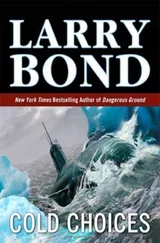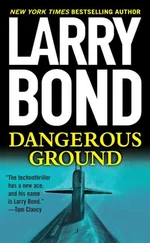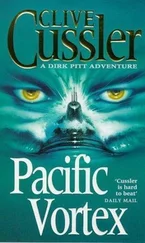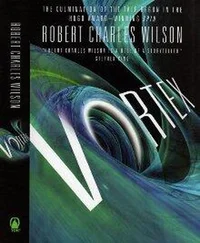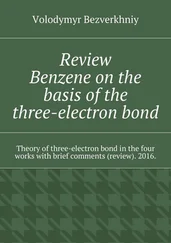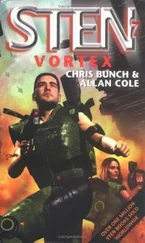“First Squad! Break it off and reform here!”
Working quickly and carefully in the darkness, Miller attached a blasting cap, fuze, and fuze igniter to the end of the cord. As he worked, he tried to forget that det cord was itself an explosive. If he rushed the job, it would go off in his face.
Wire and electrical detonators were out of the question for this job.
There was too big a chance of their picking up stray voltage from the transmission tower.
One by one, the Rangers stopped firing and raced over to the drainage ditch. One screamed suddenly and flopped forward, clutching at a leg that had been shot out from under him. Two others hauled him upright and half-pulled, half carried him to the ditch.
Miller took one last look around. None of his men were still out in the open. He took a deep breath and pulled the pin out of the fuze igniter.
Throwing it back toward the tower, he yelled, “Fire in the hole!”
The Rangers went prone, facedown in the dirt. Nobody fucked around when explosives were about to go off. Miller buried his face in the ditch.
Whummmp. Whummmp. Whummmp. Three separate blasts sliced through the supports holding up the transmission tower. Tom pieces of metal whirled away overhead.
Slowly at first and then faster, the tower leaned drunkenly far over to one side. Bolts and struts popped and then snapped off under immense and increasing weights and pressures. Abruptly, everything gave way at once.
With a grating screech of tortured, twisting steel, the tower crashed to the ground. Downed power lines danced and sparked like ghostly flickering blue snakes.
Pelindaba’s backup power source had been knocked out of commission.
PELINDABA CENTRIFUGE URANIUM-ENRICHMENT
PLANT
Indifferent to the outside world, the South African technicians monitoring twenty thousand rapidly spinning centrifuges inside the enrichment plant’s central cascade hall moved through their own universe of high-pitched, howling noise. None of them could hear the alert sirens and nobody in the garrison had yet taken the time to warn them of the attack. Then the lights went out.
Disaster struck instantly.
The scientists and engineers who’d designed the enrichment plant had taken precautions against an accidental loss of one or the other of
Pelindaba’s two independent electric power sources. An automatic transfer system stood ready to shunt electricity from either the coal-fired steam plant or the thirteen-kv transmission line connected to the Pretoria grid. Unfortunately, the South African design team had never imagined the deliberate and simultaneous destruction of both. Esher Levi had found
Pelindaba’s Achilles’ heel.
Like any highly sophisticated and fragile machine, a uranium-enrichment centrifuge carries the seeds of its own destruction inside itself. To successfully and efficiently separate fissionable U-235 from non fissionable U-238, each centrifuge’s carbon-fiber rotor must spin at nearly thirty-five thou sand rpm-producing peripheral velocities of up to five hundred meters per second.
Reaching that kind of rotation isn’t easy. An enrichment centrifuge must be carefully balanced and precisely controlled as it spins faster and faster.
Several critical speeds-speeds where the rotor will begin to vibrate dangerously-must be negotiated before it can reach its operating rpm. End dampers can help reduce these vibrations, but they become uncontrollable if the machine contains a significant amount of uranium hexafluoride gas as it cycles through any of these critical speeds.
All of Pelindaba’s spinning centrifuges were full of uranium hexafluoride gas when the plant lost power.
In fractions of a second inertia and drag were at work. Rotors spun slower and slower. And as the machines decelerated, their carbon-fiber walls began to flex, wobbling about like wet noodles-distorted by the gas trapped inside.
Most of the twenty thousand uranium-enrichment centrifuges shattered simultaneously-hurling carbon fiber fragments spinning at more than a thousand miles an hour into the protective casings surrounding each machine. Each crashing centrifuge sounded exactly like a large-bore shotgun being fired just a few feet away.
Some of the casings ruptured, and other machines were thrown off their floor mountings, tearing violently away from the piping connecting each enrichment cascade. Immediately, yellow clouds of highly corrosive uranium hexafluoride gas began spewing out into the cascade hall-spraying from the mangled centrifuges themselves or from hundreds of ruptured feed, waste, and product pipes dangling overhead.
The gas started turning into a solid as soon as it hit room temperature and pressure, but not soon enough for some of the technicians unlucky enough to be trapped inside the darkened maze of broken piping. Several scientists and engineers ran screaming for the emergency exits clutching badly burned faces. Others died moaning, crushed beneath fallen equipment.
South Africa’s uranium-enrichment plant had been wrecked beyond repair for years.
HEADQUARTERS, 2/75TH RANGERS, NEAR THE SWARTKOP MILITARY AIRFIELD
CONTROL TOWER
Scarcely a kilometer south of Pelindaba, Swartkop Military Airfield was also under attack.
Bullets had smashed every window in the Swartkop control tower, and grenades had ignited several fires that were slowly taking hold inside-filling rooms and corridors with thick, choking smoke. Bodies littered floors and stairwells. Most of the dead wore the dark blue uniform of the South African Air Force.
Lt. Col. Mike Carreffa ran out the control tower door with one hand holding his helmet on and the other clutching his M 16. His radioman and headquarters troops were right behind him.
Swartkop Airfield was a mess. Three turboprop transport planes and a fuel truck sat ablaze at the far end of the flight line. Closer in, wrecked cars and trucks dotted the base’s parking lot and access roads.
Parachutes fluttered in the breeze, abandoned wherever his men had landed. Collapsed mounds of torn, smoking sandbags showed where the
Rangers had overrun South African positions in bitter, hand-to-hand combat.
Carrerra frowned. The Citizen Force company assigned to defend Swartkop had put up one hell of a fight. Bright white flashes and the harsh rattle of machinegun fire near the airfield’s huge, aluminum-sided hangars reminded him that his assessment was somewhat premature. South Africa’s reservists were still putting up a hell of a fight.
“Colonel, Sierra One Zero’s on the horn.” His radioman ducked as a mortar round burst on the tarmac ahead of them.
He took the offered mike.
“Go ahead, Sierra One Zero.”
“Do you have that runway clear yet?” Carreffa recognized the clipped
Northeastern accents of the colonel flying the lead MC-141. The ten
American jet transports were circling in a tight pattern over Pretoria and its adjoining airfield, waiting for confirmation that it was safe to land.
“Negative, One Zero. Estimate five minutes before we can bring you in.
Will advise. Out.”
Karrumph. Another mortar round tore up dirt and gravel one hundred meters to the left. Carrerra took his thumb off the transmit button and motioned his senior sergeant over.
“Ike, get on the platoon net and tell Sammy I want those goddamned mortar pits cleared pronto. We’ve got some birds up there anxious to get down on the ground. Got it?”
Carrerra led his headquarters troops across the tarmac toward the fighting raging near Swartkop’s aircraft maintenance hangars. He’d brought five hundred men into this battle. He had a lot fewer left now, and the 2/75th needed every rifle it could bring to bear.
CACTUS SAM LAUNCHER, SWARTKOP MILITARY AIRFIELD
The last surviving SAM launcher assigned to defend Swartkop from air attack sat motionless on a low bluff overlooking the airfield. Brown, tan, and black camouflage netting softened the four-wheeled vehicle’s rectangular, boxy shape-making it look more like a boulder or a clump of dried brush than a missile carrier.
Читать дальше
